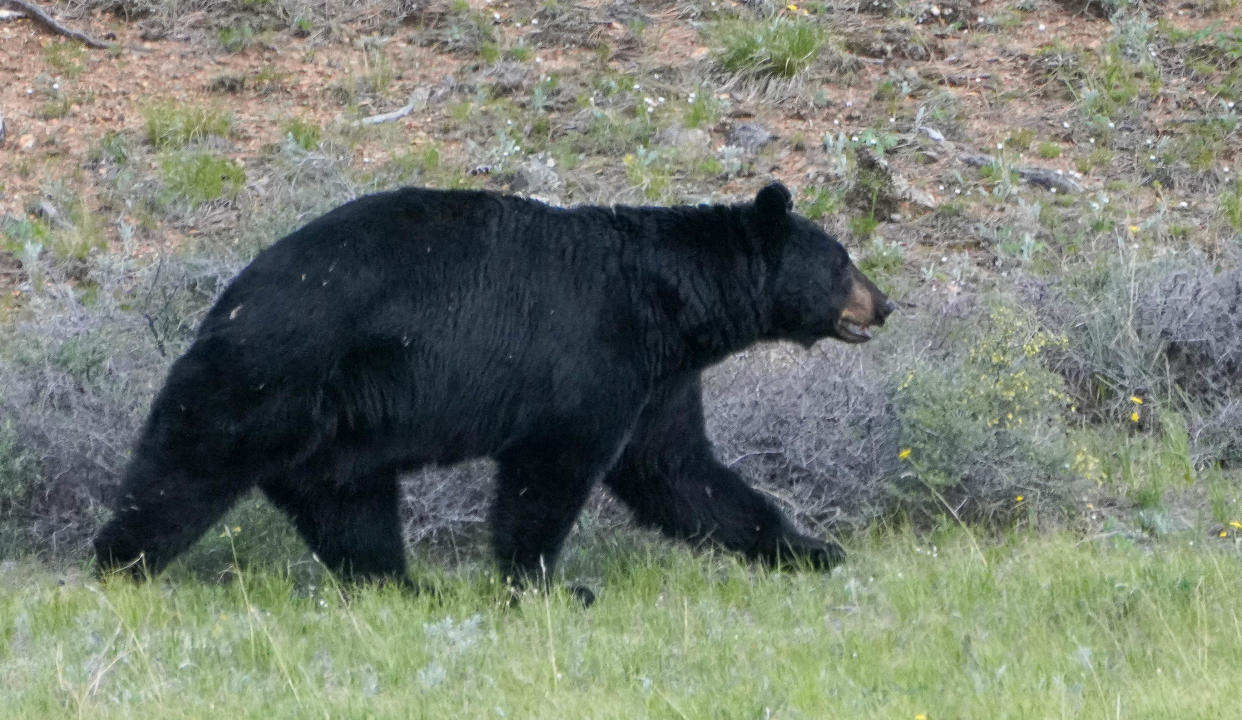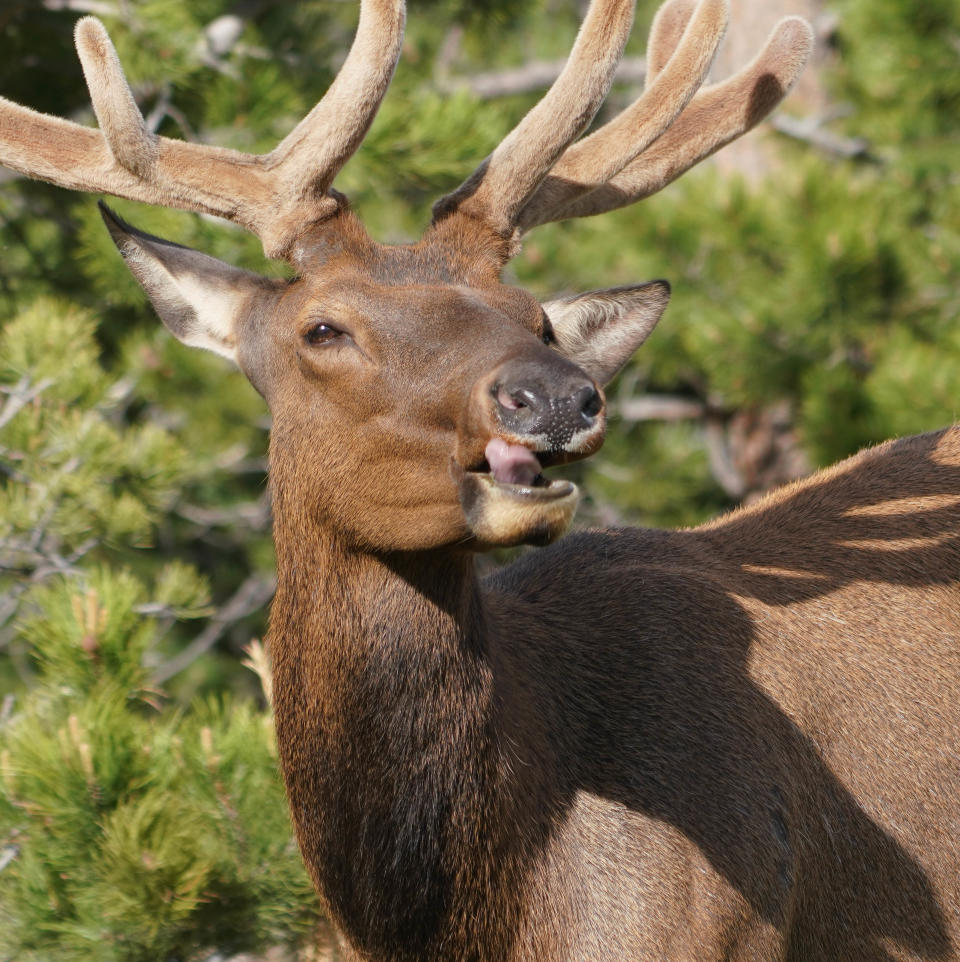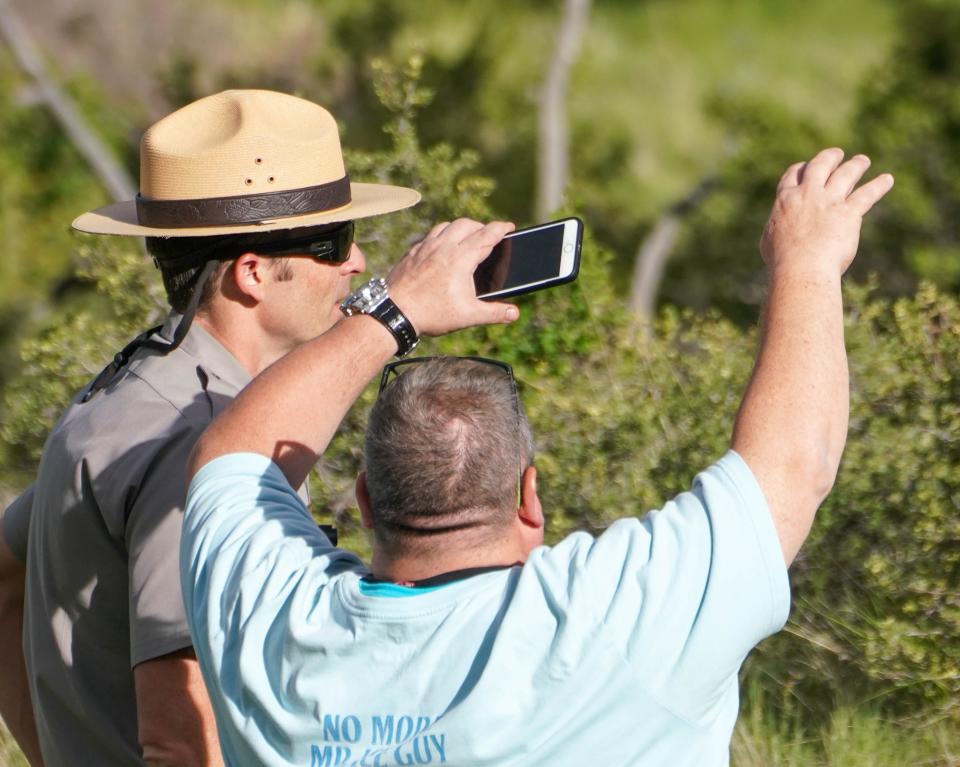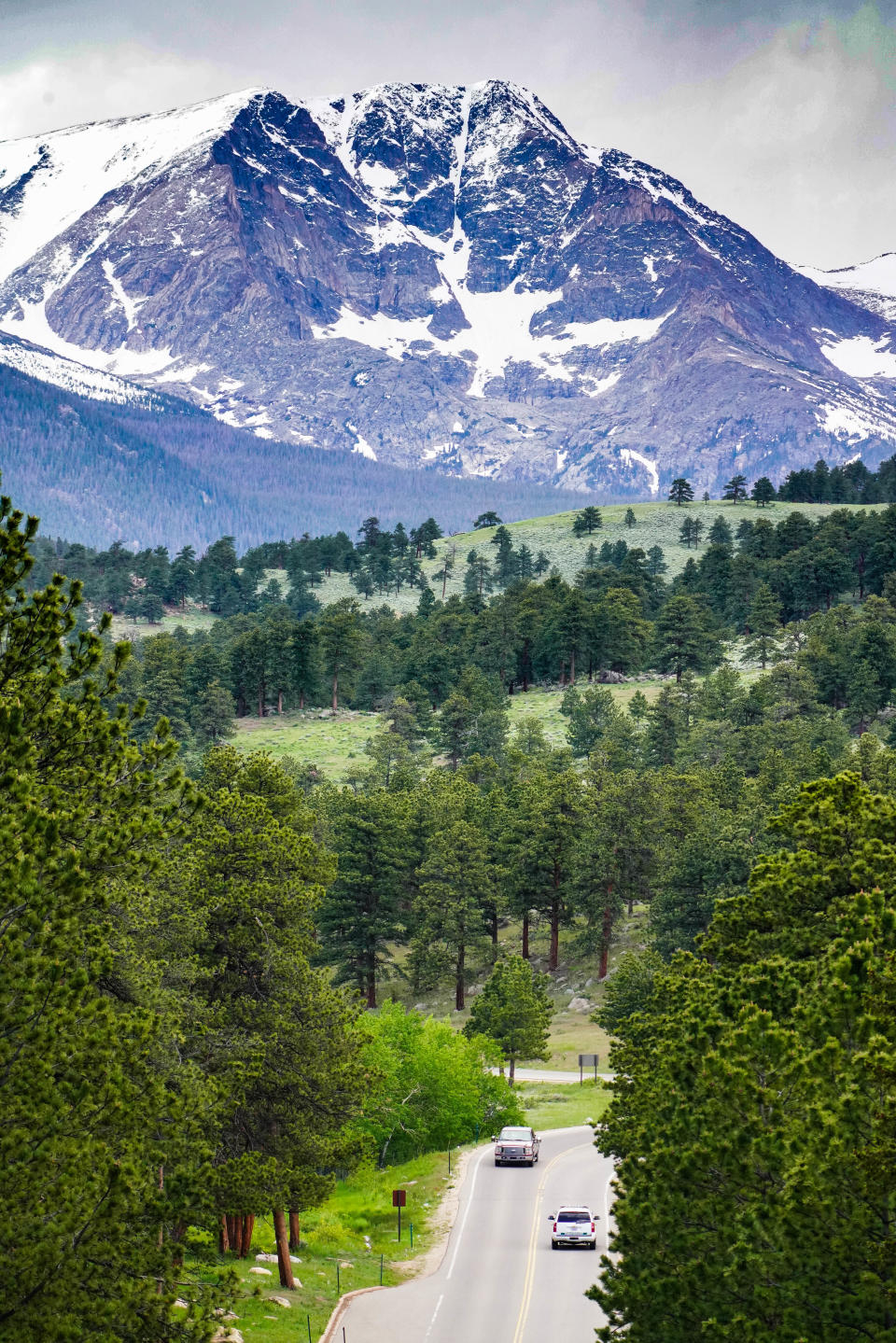Drivers are killing bears at Yosemite. Park rangers are shooting back -- with radar guns.

DENVER – Some of America's most iconic animals, from bison and bears to red-bellied turtles and the rare Hawaiian geese known as "nene," are in danger every day from an unexpected angle: tourists crashing into them while sightseeing in national parks.
Managing conflicts between millions of visitors and millions of animals is a constant balancing act for National Park Service managers, and the burden falls primarily on the tiny corps of law enforcement rangers who in many cases have become little more than traffic cops, trying to stop speeding cars from killing animals and human visitors alike.
“Our biggest problem, and one that’s getting worse, is that people drive too fast," said Scott Gediman, a spokesman for Yosemite National Park in California. "They’re hitting wildlife, and they’re specifically hitting bears.”
Across the country, park rangers are spending more time managing traffic in national parks than on any other area of responsibility, which includes backcountry rescues, investigating assaults and combating poaching. Last year, about 1,800 rangers reported making more than 25,000 speeding stops at the National Park Service's 419 parks, monuments, parkways and battlefields, according to an exclusive USA TODAY analysis of internal park service data.
Drownings, car crashes and falls are the leading causes of death for the approximately 300 humans who die in parks every year. And park experts say many more animals are killed, although there isn't a formal method of counting the deaths. At Yosemite, rangers say at least 61 bears have been hit by cars in the past decade, and there's no way to track how many of those bears died as a result of their injuries.
![A herd of bison crosses a bridge at Yellowstone National Park in March 2017. The free-ranging herds often cause minor traffic delays for park visitors who find their vehicles temporarily surrounded.
[Via MerlinFTP Drop]](https://s.yimg.com/ny/api/res/1.2/rvHhCEayTa6b3Dd9ZXoziA--/YXBwaWQ9aGlnaGxhbmRlcjt3PTk2MDtoPTQ3OQ--/https://media.zenfs.com/en-us/usa_today_news_641/60b1d86f3e068486c9167a0694c4f957)
“They take speeding seriously because there’s so much wildlife that gets killed," said Paul Stevens, who retired in 2015 from his post as chief ranger for North Carolina's Cape Hatteras National Seashore, which stretches 70 miles along the Outer Banks. "A lot of those roads in the parks are crowded and are not meant to be high-speed roads.”
Nationwide, the emphasis on traffic enforcement comes while the number of park rangers has been declining for decades, according to an exclusive analysis by the USA TODAY Network using data obtained via the federal Freedom of Information Act.
The data shows that park rangers have increased their traffic stops by 4% over the past three years despite a staffing reduction of more than 5% over the same period. The increase in enforcement has accompanied a rise in park visitation nationally, with 318 million visitors last year, up 16% in a decade.
Current and former park officials say traffic enforcement is a top priority because while the vast majority of park visitors arrive in their own cars, they sometimes forget that visiting a national park isn't the same as driving a highway in their hometown. Deer dart out unexpectedly. Roads curve around vistas or across tumbling waterfalls.
In many cases, the roads themselves are narrower than normal ones, with tiny shoulders, all part of a design intended to slow down drivers.
It doesn't always work.

In Yosemite, rangers put up "bear crossing" signs to warn drivers, but people stole some of them. This month, Yosemite's rangers are launching an aggressive speeding-control enforcement program in areas where bears normally cross the roads. Rangers are alarmed because at least six bears have been hit in the past two weeks.
“You’re coming into a place where the wildlife is protected just as much at the environment," Gediman said. "We want visitors to know we’re very serious about this.”
Not every traffic stop is intended to protect animals, however – at the 444-mile-long Natchez Trace Parkway linking Mississippi and Tennessee, rangers aggressively enforce speed limits on a road that was never intended to be driven fast. Instead, the pavement that follows old Native American and frontier trading routes was designed to evoke the feel of a “touring road,” said Chief Ranger Sarah Davis. One section, she said, was designed to handle about 2,000 cars a day but actually sees about 15,000 cars, and the speed limit is never more than 50 mph.

Davis’ rangers have reported more than 23,000 traffic-related "contacts" with the public in the past four years, from traffic stops to speeding tickets and broken headlights.
“Unlike most national parks, most of our users are locals using the park as a commuter route,” she said.
Davis and her staff focus primarily on law enforcement, making drug busts, arrests and writing speeding tickets. Their aggressive enforcement means Davis and her 20-ranger-staff are among the busiest in the country, making more traffic contacts than any other park in the 419-unit National Park System, according to the USA TODAY analysis. Davis herself once wrote a ticket for someone driving 105 mph, nearly twice the legal limit.
“People think we are out there protecting the bears, and yes, we do that, but we are out there protecting people, too,” Davis said. “By doing traffic safety, we are doing that – we are performing that protection function.”
Davis said Natchez Trace has six to seven fatal car crashes annually and about 350 crashes overall. About one-third of all reported crashes are blamed on collisions with the park's abundant white-tailed deer.
Like Gediman, Davis said it's impossible to know how many animals are killed in the park each year because no one goes out to count dead salamanders or turtles.
Critics have long complained that while park service managers know animal deaths caused by cars are a problem, they don't adequately track them. From 1990 to 2005, wildlife-vehicle collisions were the leading cause of single-vehicle crashes in the National Park Service system and accounted for 10% of total vehicle crashes, which was more than double the 4.6% national average, according to a 2009 park service study, the latest available.
Individual park statistics also speak to the problem. At Yosemite, at least 300 black bears were struck by cars from 1995 to 2012, according to park workers. It's unclear how many of those bears later died.
In Grand Teton National Park in Wyoming, the number of large mammals (more than 30 pounds) killed in vehicle collisions climbed 205% from 1991 to 2011. Animal welfare advocates have since lauded Teton's managers for implementing lower nighttime speed limits and flashing warning signs, which help protect bison and bears from being hit by tourists.
One solution to reduce wildlife deaths would be wildlife overpasses or underpasses – bridges built to let animals move freely over or beneath roads without ever sharing space with cars. But internal documents show the service lacks the money to build such structures, even though it also knows certain species, including turtles and the Hawaiian Nene, are in danger of dying out because so many of them get killed by cars.

“Crossings are important because roads present really huge barriers to certain species," said Tiffany Yap, a staff scientist and wildlife corridor advocate with the Arizona-based Center for Biological Diversity, which lobbies to protect threatened animals. "Wildlife crossings require resources and funding, but over the long term, it can save lives and money.”
Smaller steps can help protect animals but may have unintended consequences. In Yellowstone National Park, for instance, drivers often brake suddenly when they spot bison, bears or elk. That can cause fender-benders, and so park managers installed more viewing pullouts – but that leads to other drivers speeding through the area and colliding with the same animals other people are pulling over to look at.
Stevens, the retired ranger, said he has always tried to use traffic enforcement as a way to educate visitors about the dangers of speeding within parks. Every ranger, he said, takes seriously his or her charge to protect both the park and its wildlife for future generations.
“To me, it’s a very noble mission to preserve the cultural and historical resources of the United States of America," Stevens said. “Over my career I’ve written a lot of tickets and made a lot of arrests. But I’ve had more people tell me, after I've issued a violation, 'Thanks.' They thank me. Just because these people have committed a misdemeanor offense doesn’t mean they’re bad people. You have to treat them with respect.”

This article originally appeared on USA TODAY: Yosemite National Park: Bears are killed by speeding tourists

